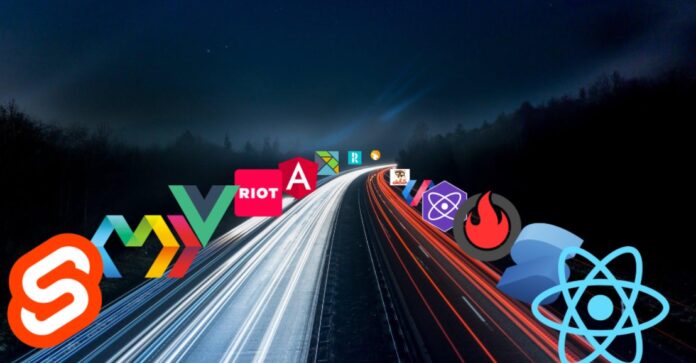
When it comes to the creation of interactive and multimedia content then JavaScript (JS) is a widespread language used. Small businesses can get most of the coding language by using one of the JS frameworks. Why should you choose one? Read further to learn.
Why Choose JavaScript Web Frameworks For Small Businesses?
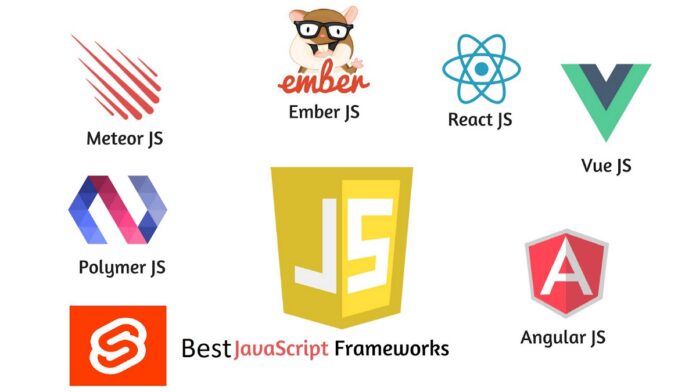
According to the survey results, 67.7% of software engineers all over the world used JavaScript while working on various projects. That makes JS one of the most used languages and JS developers most demanded. It’s expected that the programming language will keep its leadership in 2024 and beyond.
It’s because JavaScript not only supports functional, event-driven, and imperative (including prototype-based and object-oriented) programming styles but can be used on both the back-end and front-end. Thus, JS is used everywhere: server/web/mobile apps, games, sites, and many more. Meet the world-class java development team weassemble.team by clicking here.
This coding language has complicated semantics. Thus, it’s quite time-consuming and expensive to build a JS app entirely from a scratch. And that’s where frameworks come into play. They are pretty helpful in building high-quality products because they are collections of different code libraries (pre-built groups of codes) that can be compiled together so that a developer can more easily refer to and use the scripts.
Besides that, frameworks are easily adaptable for the designing of different projects, and thus, software engineers prefer them. They also allow developers to create responsive applications. This fact makes frameworks even more popular among JS developers. If you’re looking for a dedicated team of JS software engineers then click here.
Top 10 JavaScript Web Frameworks For Your Business
We reviewed the ten best JS frameworks for web development with all the key features, pros and cons described. Look through the list below to find the option that fits your project most of all.
1. AngularJS

It’s one of the most powerful and efficient open-source JavaScript frameworks. It was supported by Google, implemented to use for developing a Single Page Application (SPA), and offers easy methods for data processing, MVC architecture, dependency handling, built-in module, etc. It extends the HTML into the app and interprets the attributes to perform data binding.
Its main features are:
- It is high-performance;
- It is cross-platform (PWAs (progressive web apps), desktop, native);
- It works across different OS (operating systems);
- Offers an intuitive and advanced API;
- Makes it possible to receive intelligent code completion;
- Provides instant error detection;
- Includes feedback options, etc.
Advantages of the framework are:
- Ideal synchronization between model and view;
- All the changes in the code are instantly displayed in the view;
- Ability to separate data and view;
The main disadvantages of Angular are:
- Complex learning curve;
- Knowledge of MVC (Model-View-Controller) patterns is a must because everything is HTML-centered;
- The heaviness of the framework;
- It’s not adapted to mobile devices (iOS and Android users often report bugs).
2. Backbone.js

It’s another great framework that is worth your attention. Backbone depends only on the JS stack. Besides, the development of the framework involves the idea that all the backend functions must flow through an API to achieve complex functionalities by writing less code.
The Backbone’s main features include the following:
- Built-in functions make the app development and the frontend much easier;
- It’s free and open-source;
- Availability of 100+ extensions;
- Building blocks (views, models, routers, events, collections) are provided for assembling the frontend;
- It helps in separating business and user interface logic — it uses a model-view-presenter that performs the function while MVC is responsible for business logic;
- It has a hard dependency on Underscore.js and a soft dependency on jQuery;
- It enables the creation of client-side web apps or mobile apps in a well-structured format.
Pros:
- Small size and flexibility;
- Easy learning curve;
- Ability to create SPAs;
- Understandable functionality with event-driven algorithms used for connecting views and models, excluding cluttered intermediate code;
- Ability to connect it to REST APIs to sync the backend and frontend.
Cons:
- Manual coding because of a little amount of pre-set code;
- Memory leaking because sometimes Backbone code fails to return the memory space that was occupied for temporary purposes and developers need to identify and fix these bugs manually.
3. Enyo
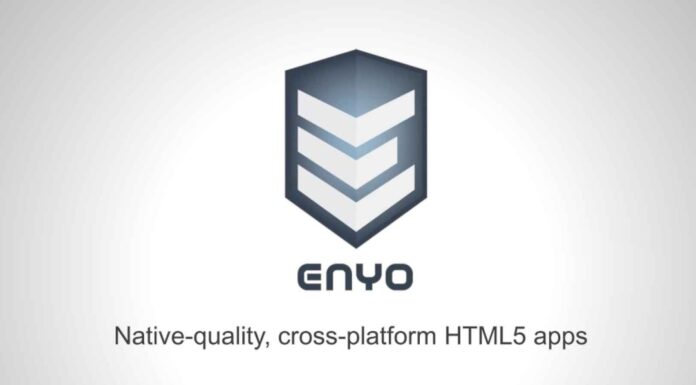
This framework enables software engineers to build native-quality HTML5 apps that run smoothly everywhere from smartphones and tablets to PCs and TVs.
The major features of Enyo are:
- Cross-platform — it helps apps run on every platform almost everywhere;
- A very solid core;
- Ability to produce high-quality user interface;
- Easiness of code creation;
- Reusability;
- Faster for native app development;
- Easy learning curve;
- It is quite suitable for backend technology like Python, NodeJS, and Java.
Pros:
- Customizable and choosable set of modules/components;
- Reusable modules (components) are offered that allows structuring the whole project in these small modules;
- It creates a source map of bundled JS to help in debugging issues.
Cons:
- No support for IE8;
- Small community.
4. React
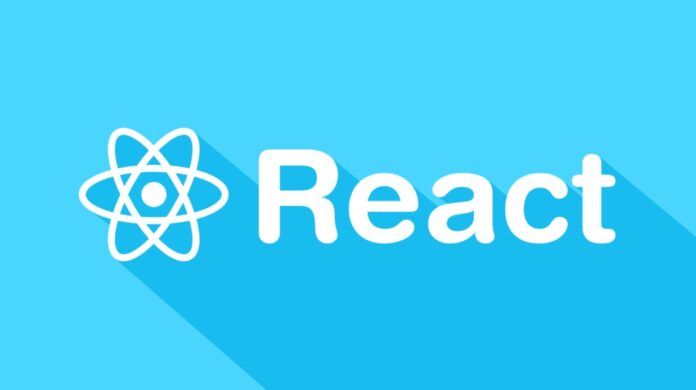
It’s an open-source code library that has all the essential features of frameworks. It is used to develop the responsive and dynamic UI of web pages. Being SEO-friendly, React is preferred by software engineers who create e-commerce projects.
Key features of React:
- Virtual DOM (Document Object Model);
- Cross-platform performance;
- One-way data-binding;
- Event handling;
- Declarative;
- Made up of multiple components that can be reused.
Pros:
- Simple to learn and use;
- Native for mobile apps;
- Supports different tech stacks and languages;
- Comes with a great and useful set of tools;
- Fast code rendering;
- SEO-friendly;
- Ability to test and debug quickly.
Cons:
- Complicated documentation;
- Space-consuming size;
- Not a full-fledged framework;
- Constant upgrades make developers keep up with learning recent changes.
5. Node.js
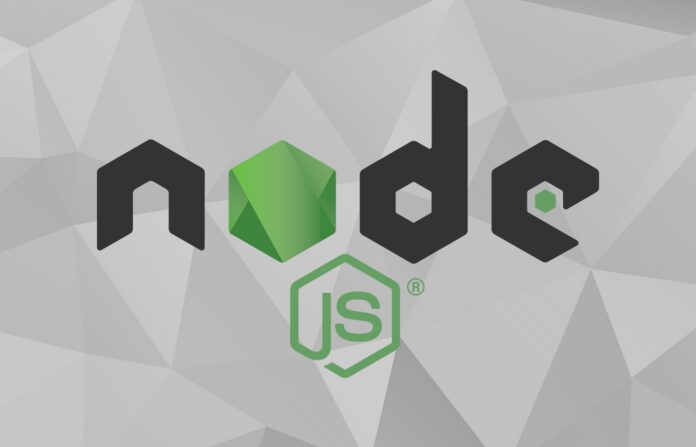
It is a backend run-time environment that allows developers to create apps for cross platforms and apps that work outside the web browser. It helps develop web apps around one single programming language and shows JAVA’s similar properties (threading, packaging, forming loops, and so on).
Key features include:
- It can be used both to frontend and backend;
- Fast to integrate and use;
- Single-threaded;
- Can be to scale-up extensively;
- Asynchronous and non-blocking thread execution;
- Ability to handle large volumes of simultaneous connections.
Pros:
- Easy to learn to get started;
- Fast performance;
- A rich ecosystem with multiple free tools available;
- An open-source framework with large community;
- Increases developer productivity;
- Boosts conversion growth.
Cons:
- Low efficiency of CPU-intensive performance;
- Difficulty in processing CPU-based tasks;
- Coding takes more time;
- The constant need for call-back affects the quality of the codes.
6. Qooxdoo
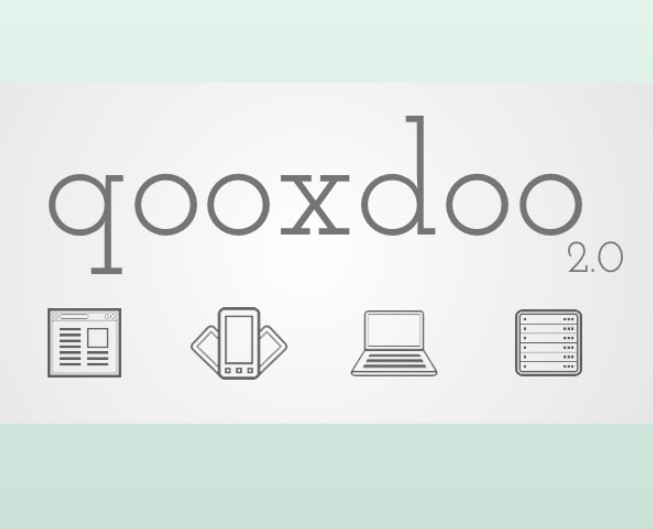
It is a universal JS client-side framework that is designed for building graphical user interfaces for web apps for various platforms.
Among the main features of this framework you will find the following:
- It allows to build:
- Interactive apps;
- Native-like applications for mobiles;
- Light-weight single-page oriented web apps;
- Applications to run outside the browser.
- The programming concept Ajax is used;
- Enables to process user input without reloading the entire web page again;
- The API reference is auto-generated from Javadoc;
- The source code of the project is free and is available under the EPL, LGPL licenses.
Advantages:
- Cross-browser;
- No need to know DOM, HTML, or CSS;
- Large user community.
7. Vue.js

This framework is very commonly used in developing cross-platform apps, powerful SPAs, websites, etc. It’s a high-speed and flexible framework for frontend development.
Key features are:
- Cost-effective virtual DOM view option;
- Availability of a built-in component that helps with animations, CSS transitions, and so on;
- Two-way data binding options;
- The simple core functionality that can be enhanced with libraries, APIs, and add-ons;
- Availability of HTML-based templates that bind the DOM with the instance data.
Advantages:
- Simple to integrate;
- Easy to learn;
- Small in size;
- Two-way communication available;
- High flexibility.
Main downsides:
- Difficult learning curve;
- Small user community;
- Lack of essential plugins;
- Not suitable for extensive scaling.
8. Svelte.js
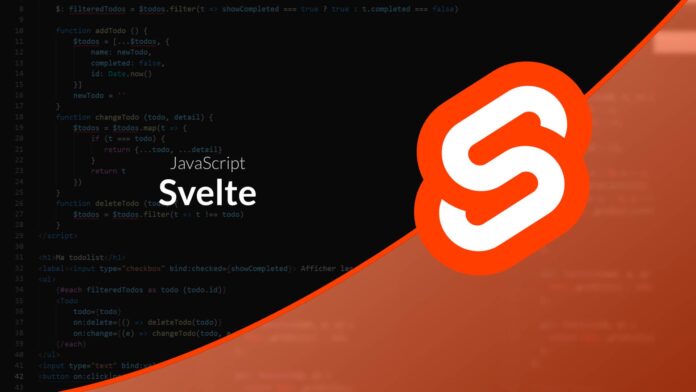
It is a code compiler that enables developers to transform declarative components into imperative JS code.
Key features are the following:
- The majority of the work is performed in the compiler rather than in the browser;
- Codes are converted into Vanilla JavaScript;
- High reactivity;
- Components can be built in languages you are comfortable with (HTML, JavaScript, CSS).
- Automated updates to the DOM.
Advantages:
- Lightweight and easy implementation;
- Lesser boilerplate;
- Very easy learning curve;
- Built-in reactive store;
- Easy to read HTMLX syntax and templating system;
- Flexible output;
- Fast performance;
- Quick resolution of code performance issues (like minimizing dependencies) in the minimal runtime;
- Powerful virtual DOM allows rendering frameworks without a single frame drop.
Disadvantages:
- A small ecosystem;
- Not enough add-ons;
- The constant need to learn and upgrade information;
- Not many tools are available.
9. Gatsby JS

This is an open-source front-end JS framework. It’s perfect when it comes to the creation of dynamic and very precise websites so that they function seamlessly.
Key features of Gatsby JS include the ones described below:
- Data from multiple sources can be combined;
- Ability to write either in JavaScript, LESS, or SCSS;
- Seamless work in combination with different CDNs (Content Delivery Networks).
The advantages:
- High accessibility;
- Easy and cost-effective scalability;
- Non-existent attack surface.
The downsides:
- The constant updates of the content are needed;
- Implementation and maintenance can be expensive.
10. Jest
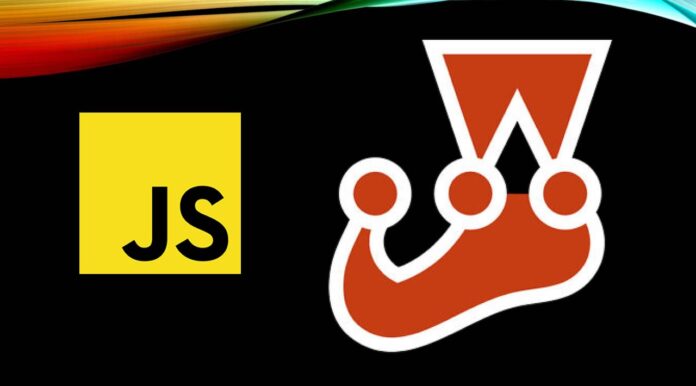
It’s another testing JS framework that is run and maintained by Facebook. Among the key features of the framework are:
- Isolated tests can be run for excluding any performance drops;
- Well-thought-out and maintained API;
- Code coverage information can be automatically gathered;
- Ability to easily mock objects that are outside the test scope.
The main advantages are:
- Easy learning curve;
- Very simple to implement and use;
- Perfectly compatible with Angular, Node, Vue, React, Typescript, and others;
- Zero configuration is needed.
Minimal JavaScript library and tool support are the key disadvantages of this JS framework to keep in mind.
Conclusion
JavaScript is a dominant coding language when it comes to the development of robust solutions. And frameworks are very helpful in this. They can decrease the time and effort spent on application development, saving your budget. Yet, there is no perfect option, thus, you need just choose the one that fits your project better. So, carefully learn the project requirements to choose the right JS framework with its unique features and toolkit.











